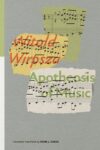 What’s the saddest song you know? Is it Strange Fruit, The River, Blue Shadows In The Street, or Seven Curses? There’s always Albinoni’s Adagio in G Minor. What makes a song sound sad? For those of you who haven’t had any music theory classes in a while, sad music usually consists of intervals of a minor third (C major to E flat is an example) and we sort of take for granted that it somehow sounds sad. Megan Curtis, a scientist at Tufts University, has linked the sadness we find in music to the sadness we find in sad speech. Even if you erase the words and leave just the melody of the speaker’s voice, people can tell that what’s being said is “sad” from the movement of the sound of the speakers voice. These musical movements work in perfect ratios, so its fairly easy to correlate them to speech patterns. You can listen to some of the recordings from her experiment here.
What’s the saddest song you know? Is it Strange Fruit, The River, Blue Shadows In The Street, or Seven Curses? There’s always Albinoni’s Adagio in G Minor. What makes a song sound sad? For those of you who haven’t had any music theory classes in a while, sad music usually consists of intervals of a minor third (C major to E flat is an example) and we sort of take for granted that it somehow sounds sad. Megan Curtis, a scientist at Tufts University, has linked the sadness we find in music to the sadness we find in sad speech. Even if you erase the words and leave just the melody of the speaker’s voice, people can tell that what’s being said is “sad” from the movement of the sound of the speakers voice. These musical movements work in perfect ratios, so its fairly easy to correlate them to speech patterns. You can listen to some of the recordings from her experiment here.
This post may contain affiliate links.







